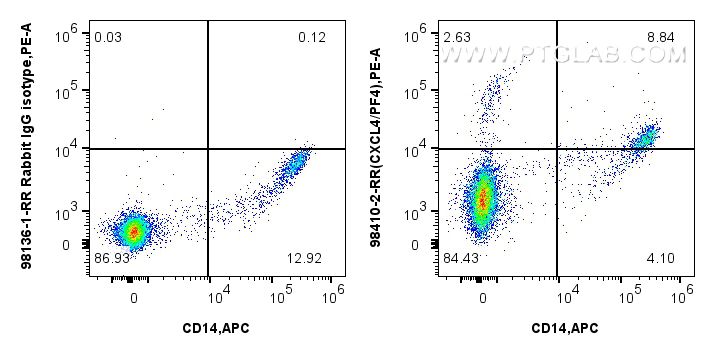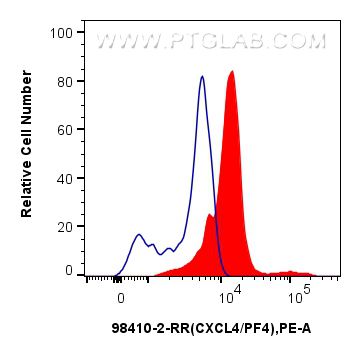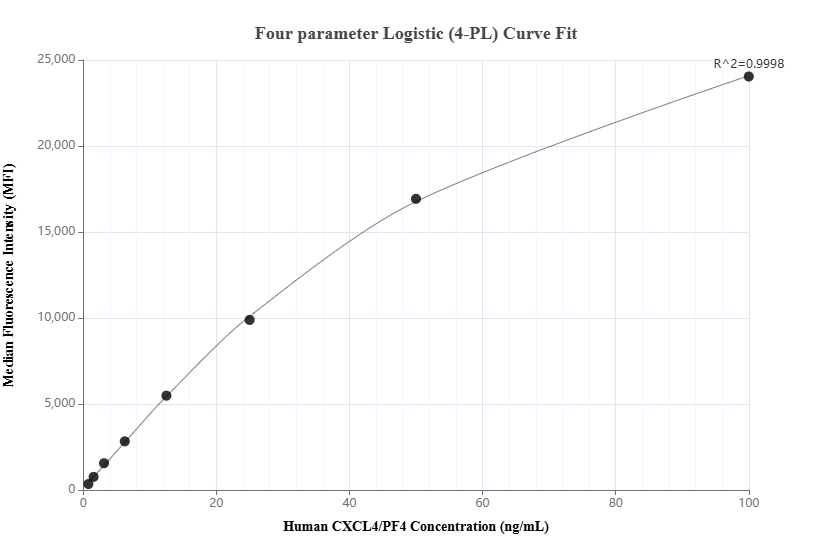Product Information
98410-2-PBS targets CXCL4/PF4 as part of a matched antibody pair:
MP02040-2: 85647-3-PBS capture and 98410-2-PBS detection (validated in Cytometric bead array)
Unconjugated rabbit recombinant monoclonal antibody in PBS only (BSA and azide free) storage buffer at a concentration of 1 mg/mL, ready for conjugation. Created using Proteintech’s proprietary in-house recombinant technology. Recombinant production enables unrivalled batch-to-batch consistency, easy scale-up, and future security of supply.
This conjugation ready format makes antibodies ideal for use in many applications including: ELISAs, multiplex assays requiring matched pairs, mass cytometry, and multiplex imaging applications.Antibody use should be optimized by the end user for each application and assay.
| Tested Reactivity | human |
| Host / Isotype | Rabbit / IgG |
| Class | Recombinant |
| Type | Antibody |
| Immunogen | CXCL4/PF4 fusion protein Eg2129 Predict reactive species |
| Full Name | platelet factor 4 |
| Calculated Molecular Weight | 11 kDa |
| GenBank Accession Number | NM_002619.4 |
| Gene Symbol | PF4 |
| Gene ID (NCBI) | 5196 |
| Conjugate | Unconjugated |
| Form | Liquid |
| Purification Method | Protein A purification |
| UNIPROT ID | P02776 |
| Storage Buffer | PBS only, pH 7.3. |
| Storage Conditions | Store at -80°C. |
Background Information
CXCL4, also known as platelet factor 4 (PF-4), is the oldest member of the chemokine family. CXCL4 is a chemokine produced by activated platelets and immune cells involved in pathological conditions such as cancer, infections and inflammatory diseases like systemic sclerosis (SSc), rheumatoid arthritis (RA) and psoriatic arthritis (PsA), among others. CXCL4 is present in the α-granules of platelets in amounts that constitute up to 2% platelet protein mass. CXCL4 plays a determinant role in distinct physiological processes such as in hematopoiesis, angiogenesis, coagulation and modulation of immune responses. For instance, CXCL4 can prevent monocyte apoptosis and promote cell survival, induces the production of TNF and reactive oxygen species (ROS) and promotes monocyte differentiation into a unique macrophage-like phenotype.







